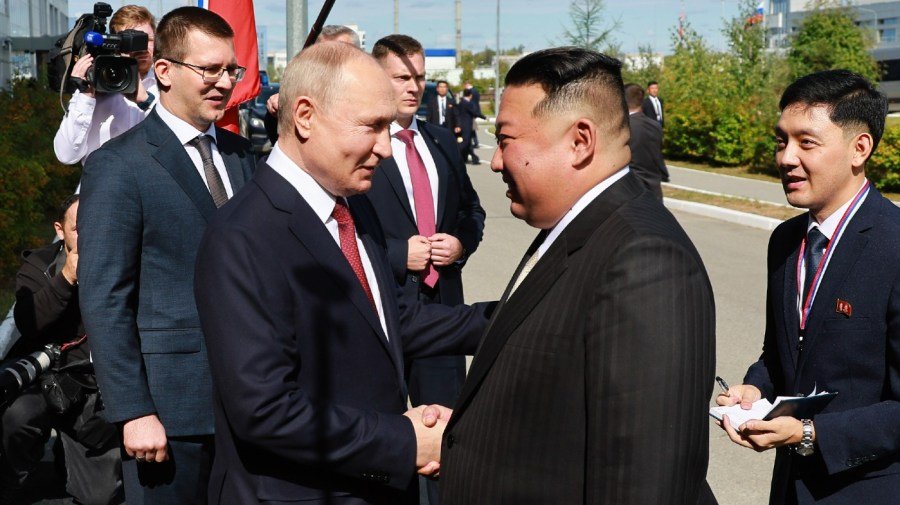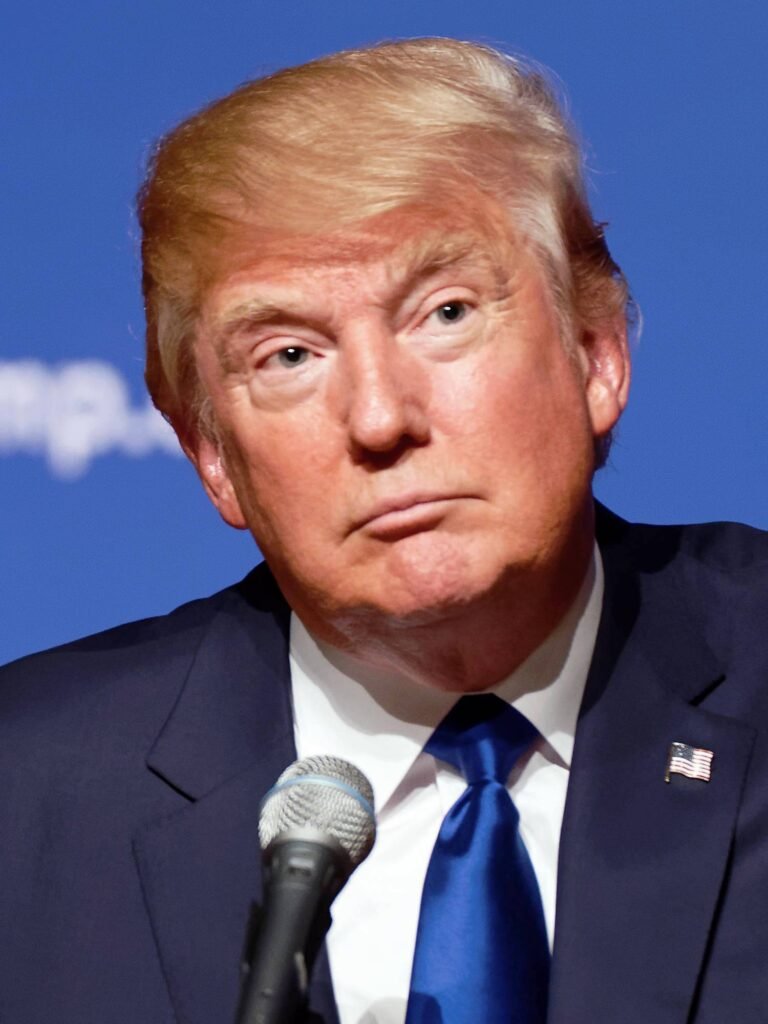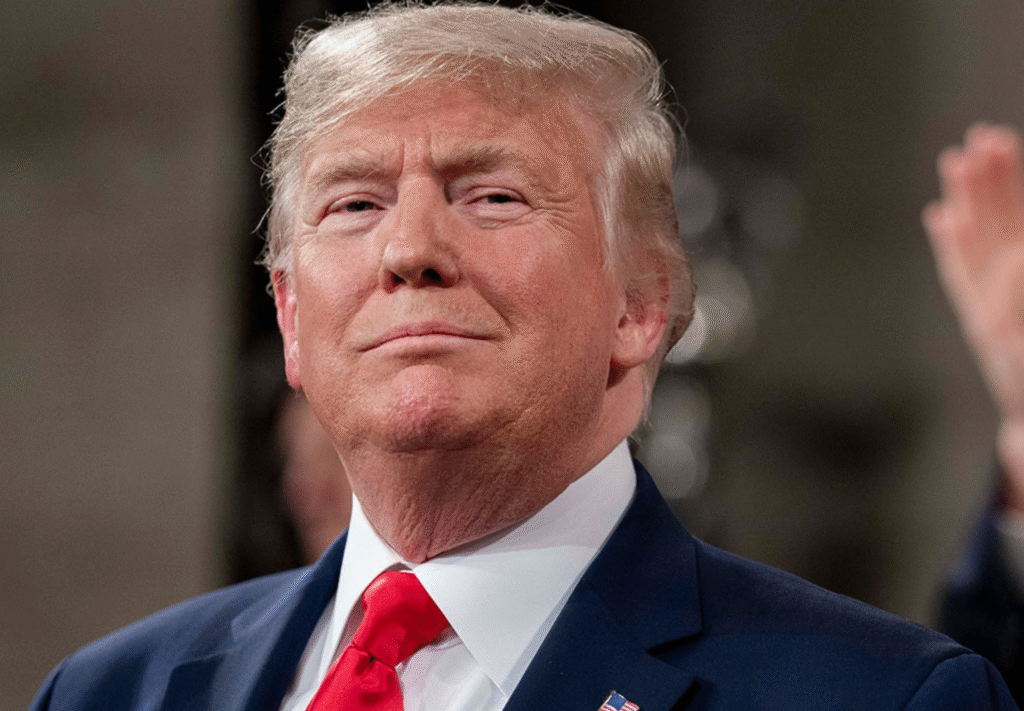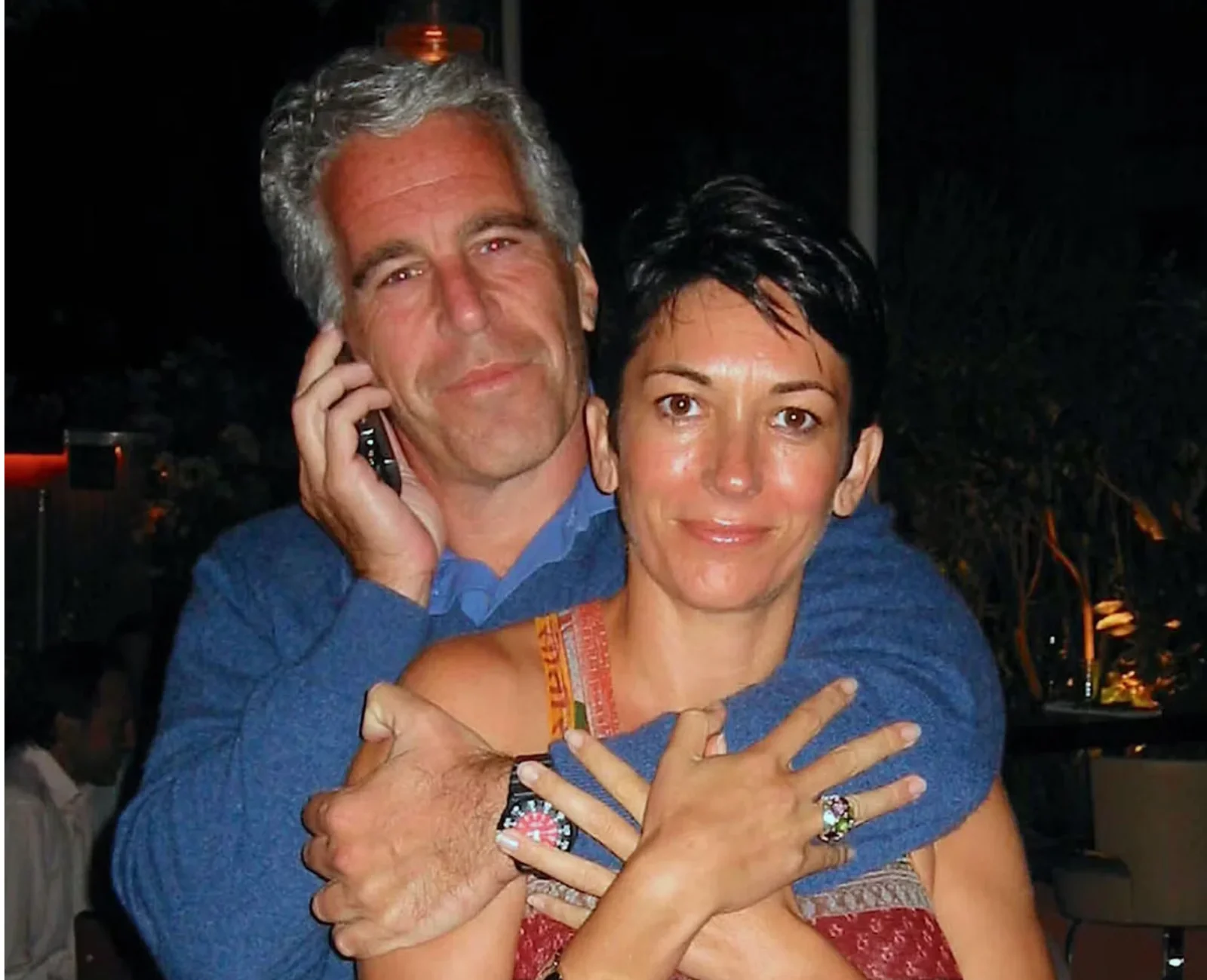World News
Deal or no deal? What we know about the Putin-Kim meeting on September 15, 2023 at 9:15 pm

Russian President Vladimir Putin and North Korean leader Kim Jong Un met during a high-stakes meeting in eastern Russia this week, underscoring deep ties and possibly cementing a military support and technology deal the U.S. warns will prolong the war in Ukraine.
While no official announcement was made, Western analysts still expect that North Korea and Russia reached an agreement in which Pyongyang will provide Moscow with artillery shells in return for food and critical technology to power nuclear missiles and satellites.
Greg Kennedy, the director of economic conflict and competition research group at King’s College London, said the lack of a formally announced deal probably has the intention to keep people “uncertain” on the specifications to avoid international scrutiny, especially because it would violate United Nations security resolutions.
“The uncertainty is something they can work with,” Kennedy said. “Without some kind of narrative or some kind of agreement that’s been verified by Western press, then you’re able to tell whatever narrative or whatever story you want around the world. So in different places, different Russian representatives can say different things.”
Kim traveled to the city of Vladivostok in eastern Russia via armored trained at the beginning of this week, making the trip after Russia’s Defense Minister Sergei Shoigu visited North Korea in July.
The two leaders met Wednesday and announced that ties remained strong, according to North Korea’s Foreign Ministry. Kim said he supported the strategic interests of Russia and vowed to strengthen relations even further. He even invited Putin to visit North Korea.
Kim also toured the Vostochny Cosmodrome, a major launch center in Russia, as North Korea has struggled to get satellites up into space. Kim is extending his stay in Russia, expected to tour Russia’s Pacific fleet and other facilities in the coming days. North Korea may also seek help with modernizing its navy and air forces.
Kremlin spokesperson Dmitry Peskov on Friday said there was no deal signed on military-technical cooperation.
“No agreements were signed on this issue or on other issues and there were no such plans,” he said, according to Russian state-run media outlet Tass.
Details of any forged deal are likely to be revealed over time by Western intelligence officials who are monitoring the situation closely. Sasha Baker, the U.S. acting undersecretary of defense for policy, said the U.S. will “try to identify and expose and counter Russian attempts to acquire military equipment.”
The implications of any deal are high. North Korea, which is still technically at war with South Korea and has robust artillery production, likely has tens of millions of rounds it could deliver to Russia, which is expending high rates of artillery. Any technology provided to North Korea could lead to an emboldened Pyongyang, which has been ramping up nuclear missile testing as tensions rise with South Korea.
The U.S. has warned that North Korea will “pay a price” if the country supports Russia in the war against Ukraine.
Pentagon deputy press secretary Sabrina Singh said on Thursday they were monitoring the situation and “would expect” a deal was made.
“What we’re seeing right now is Russia in quite a desperate mode and seeking support from North Korea,” she told reporters. “Providing any type of ammunition would further continue the war.”
Belarusian President Aleksander Lukashenko also threw himself into the mix this week, saying there could be a three-way alliance among his country, Russia and North Korea.
Summing up all of the developments, Kennedy, of King’s College London, said for Russia, “there’s a bit of embarrassment here.”
“This is not the great alliance of World War II or anything like that,” he said.
But Kennedy noted that the likely deal means Russia could now fight through the winter while it ramps up production at home.
“Anybody who thinks this was going to be over has been hedging their bets,” he said of the war in Ukraine. “You should probably open your eyes and realize that this is going to be a long term thing.”
The Associated Press contributed to this report.
Russian President Vladimir Putin and North Korean leader Kim Jong Un met during a high-stakes meeting in eastern Russia this week, underscoring deep ties and possibly cementing a military support and technology deal the U.S. warns will prolong the war in Ukraine. While no official announcement was made, Western analysts still expect that North Korea…
News
US May Completely Cut Income Tax Due to Tariff Revenue

President Donald Trump says the United States might one day get rid of federal income tax because of money the government collects from tariffs on imported goods. Tariffs are extra taxes the U.S. puts on products that come from other countries.

What Trump Is Saying
Trump has said that tariff money could become so large that it might allow the government to cut income taxes “almost completely.” He has also talked about possibly phasing out income tax over the next few years if tariff money keeps going up.
How Taxes Work Now
Right now, the federal government gets much more money from income taxes than from tariffs. Income taxes bring in trillions of dollars each year, while tariffs bring in only a small part of that total. Because of this gap, experts say tariffs would need to grow by many times to replace income tax money.
Questions From Experts
Many economists and tax experts doubt that tariffs alone could pay for the whole federal budget. They warn that very high tariffs could make many imported goods more expensive for shoppers in the United States. This could hit lower- and middle‑income families hardest, because they spend a big share of their money on everyday items.
What Congress Must Do
The president can change some tariffs, but only Congress can change or end the federal income tax. That means any real plan to remove income tax would need new laws passed by both the House of Representatives and the Senate. So far, there is no detailed law or full budget plan on this idea.

What It Means Right Now
For now, Trump’s comments are a proposal, not a change in the law. People and businesses still have to pay federal income tax under the current rules. The debate over using tariffs instead of income taxes is likely to continue among lawmakers, experts, and voters.
News
Epstein Files to Be Declassified After Trump Order

Former President Donald Trump has signed an executive order directing federal agencies to declassify all government files related to Jeffrey Epstein, the disgraced financier whose death in 2019 continues to fuel controversy and speculation.
The order, signed Wednesday at Trump’s Mar-a-Lago estate, instructs the FBI, Department of Justice, and intelligence agencies to release documents detailing Epstein’s network, finances, and alleged connections to high-profile figures. Trump described the move as “a step toward transparency and public trust,” promising that no names would be shielded from scrutiny.
“This information belongs to the American people,” Trump said in a televised statement. “For too long, powerful interests have tried to bury the truth. That ends now.”
U.S. intelligence officials confirmed that preparations for the release are already underway. According to sources familiar with the process, the first batch of documents is expected to be made public within the next 30 days, with additional releases scheduled over several months.
Reactions poured in across the political spectrum. Supporters praised the decision as a bold act of accountability, while critics alleged it was politically motivated, timed to draw attention during a volatile election season. Civil rights advocates, meanwhile, emphasized caution, warning that some records could expose private victims or ongoing legal matters.
The Epstein case, which implicated figures in politics, business, and entertainment, remains one of the most talked-about scandals of the past decade. Epstein’s connections to influential individuals—including politicians, royals, and executives—have long sparked speculation about the extent of his operations and who may have been involved.

Former federal prosecutor Lauren Fields said the release could mark a turning point in public discourse surrounding government transparency. “Regardless of political stance, this declassification has the potential to reshape how Americans view power and accountability,” Fields noted.
Officials say redactions may still occur to protect sensitive intelligence or personal information, but the intent is a near-complete disclosure. For years, critics of the government’s handling of Epstein’s case have accused agencies of concealing evidence or shielding elites from exposure. Trump’s order promises to change that narrative.
As anticipation builds, journalists, legal analysts, and online commentators are preparing for what could be one of the most consequential information releases in recent history.
Politics
Netanyahu’s UN Speech Triggers Diplomatic Walkouts and Mass Protests

What Happened at the United Nations
On Friday, Israeli Prime Minister Benjamin Netanyahu addressed the United Nations General Assembly in New York City, defending Israel’s ongoing military operations in Gaza. As he spoke, more than 100 delegates from over 50 countries stood up and left the chamber—a rare and significant diplomatic walkout. Outside the UN, thousands of protesters gathered to voice opposition to Netanyahu’s policies and call for accountability, including some who labeled him a war criminal. The protest included activists from Palestinian and Jewish groups, along with international allies.

Why Did Delegates and Protesters Walk Out?
The walkouts and protests were a response to Israel’s continued offensive in Gaza, which has resulted in widespread destruction and a significant humanitarian crisis. Many countries and individuals have accused Israel of excessive use of force, and some international prosecutors have suggested Netanyahu should face investigation by the International Criminal Court for war crimes, including claims that starvation was used as a weapon against civilians. At the same time, a record number of nations—over 150—recently recognized the State of Palestine, leaving the United States as the only permanent UN Security Council member not to join them.
International Reaction and Significance
The diplomatic walkouts and street protests demonstrate increasing global concern over the situation in Gaza and growing support for Palestinian statehood. Several world leaders, including Colombia’s President Gustavo Petro, showed visible solidarity with protesters. Petro called for international intervention and, controversially, for US troops not to follow orders he viewed as supporting ongoing conflict. The US later revoked Petro’s visa over his role in the protests, which he argued was evidence of a declining respect for international law.

Why Is This News Important?
The Gaza conflict is one of the world’s most contentious and closely-watched issues. It has drawn strong feelings and differing opinions from governments, activists, and ordinary people worldwide. The United Nations, as an international organization focused on peace and human rights, is a key arena for these debates. The events surrounding Netanyahu’s speech show that many nations and voices are urging new action—from recognition of Palestinian rights to calls for sanctions against Israel—while discussion and disagreement over the best path forward continue.
This episode at the UN highlights how international diplomacy, public protests, and official policy are all intersecting in real time as the search for solutions to the Israeli-Palestinian conflict remains urgent and unresolved.

 Entertainment4 days ago
Entertainment4 days agoWicked Sequel Disappoints Fans: Audience Verdict on For Good

 Entertainment3 weeks ago
Entertainment3 weeks agoAfter Party: Festival Winner for Best Romantic Short

 News3 weeks ago
News3 weeks agoCamp Wackapoo – Rise of Glog Takes Center Stage

 News2 weeks ago
News2 weeks agoYolanda Adams Questions Traditional Views on God’s Gender, Audience Reacts

 Entertainment3 weeks ago
Entertainment3 weeks agoFrancisco Ramos Takes Top Mockumentary Award at Houston Comedy Film Festival

 Politics3 weeks ago
Politics3 weeks agoTrump’s $2,000 Tariff Dividend Plan: Who Gets Paid?

 Politics4 weeks ago
Politics4 weeks agoMamdani’s Victory Triggers Nationwide Concern Over New York’s Future

 Film Production3 weeks ago
Film Production3 weeks agoWhy China’s 2-Minute Micro Dramas Are Poised To Take Over The U.S.



























